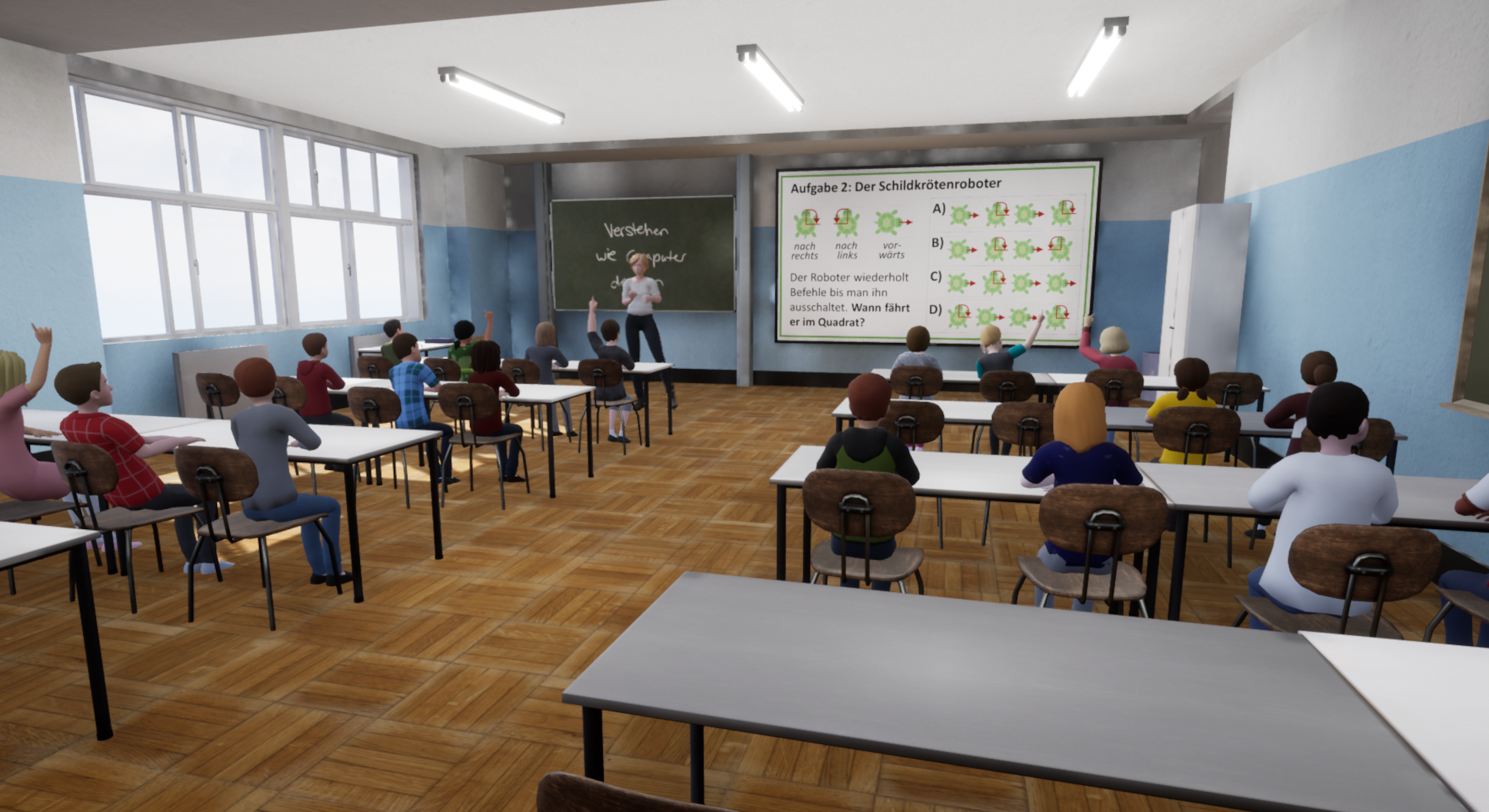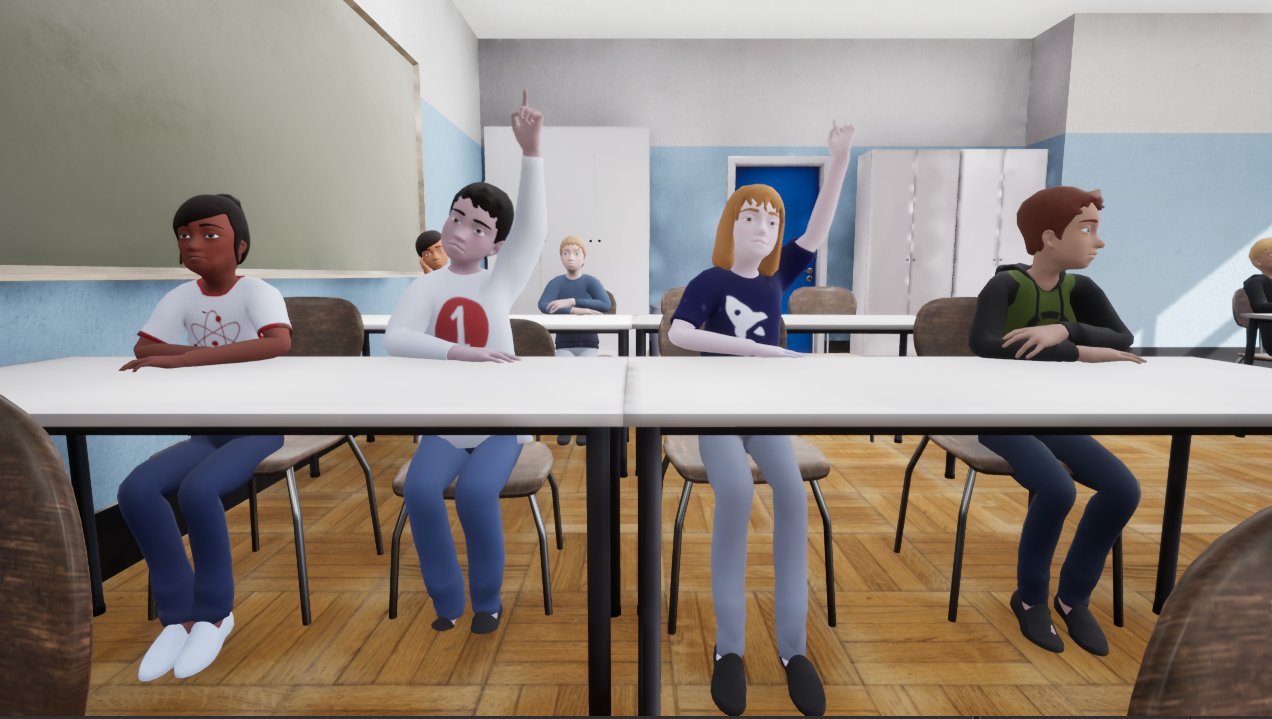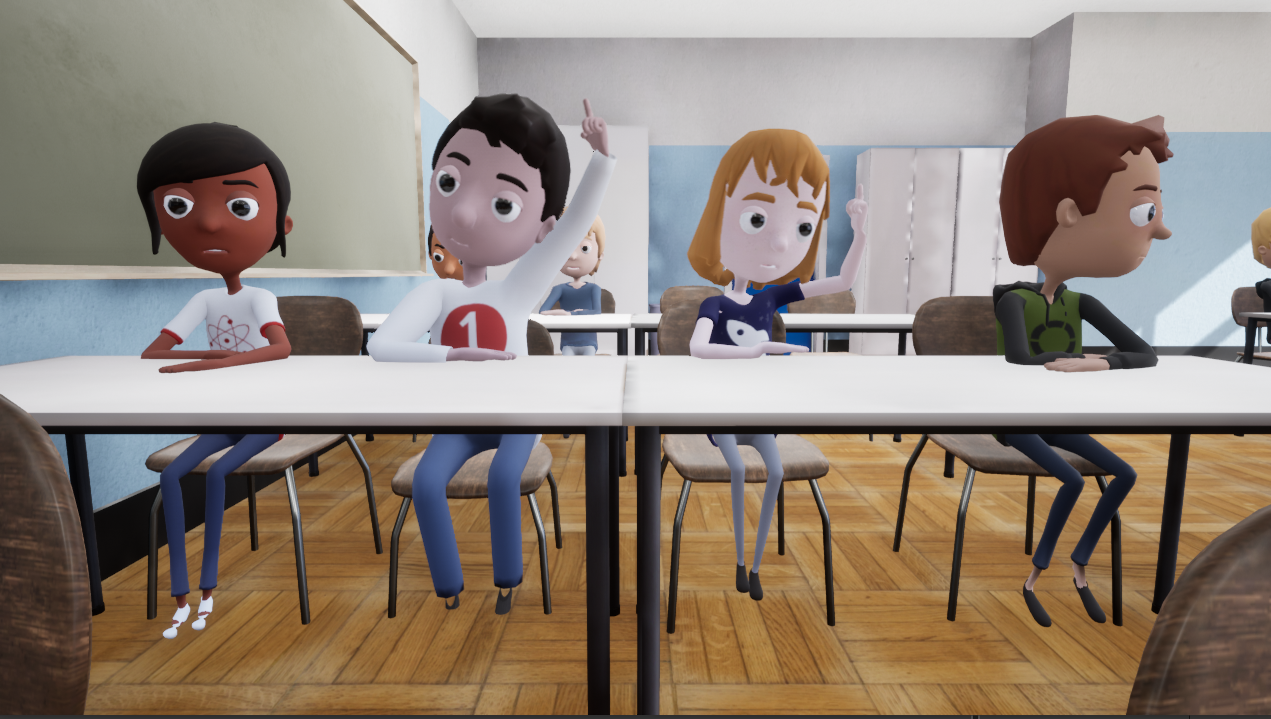Project description
Peer learners have a great impact on student learning. Educational and social psychological research has provided a large body of research about how comparisons among students affect how students evaluate themselves.
Whereas we know that peers have an effect, the exact processes of how students compare themselves in the classroom are largely unknown. The project aims to shed light into this black box.
But why immersive virtual reality (IVR)?
- IVR provides the opportunity to simulate classroom scenarios in an authentic and yet standardized way
- IVR allows experimental research to bridge the gap between ecologically valid and yet fully controllable designs
- IVR makes it possible to collect fine-grained process data such as eye movements non-intrusively and under standardized (lighting) conditions
So what’s new?
We designed an IVR classroom as an experimental tool to gain systematic and yet authentic insights into the black box of one of the most prominent phenomena of educational psychology: social comparisons and how they affect students’ self-evaluations.

Interested in first findings?
Please have a look at the following publications:
In a first eye-tracking study, we investigated how different configuration conditions of the IVR classroom affect the perception of the IVR learning experience.
Gao, H., Bozkir, E., Hasenbein, L., Hahn, J.-U., Göllner, R., & Kasneci, E. (2021). Digital transformations of classrooms in virtual reality. 2021 CHI Conference on Human Factors in Computing Systems, Article 483. https://doi.org/10.1145/3411764.3445596
In another eye-tracking study, we examined how eye-tracking data can be used to gain insights into attentional processes in VR classrooms.
Bozkir, E., Stark, P., Gao, H., Hasenbein, L., Hahn, J.-U., Kasneci, E., & Göllner, R. (2021). Exploiting object-of-interest information to understand attention in VR classrooms. 2021 IEEE Conference on Virtual Reality and 3D User Interfaces (VR), 597-605. https://doi.org/10.1109/vr50410.2021.00085
A comprehensive summary of the project and its findings can be found in Lisa Hasenbein’s doctoral dissertation.
Hasenbein, L. (2021). Social comparisons in the classroom revisited: Insights into underlying processes using immersive virtual reality as a research tool. Doctoral Dissertation. https://doi.org/10.15496/publikation-63205
This study focussed spcifically on how social-related classroom configurations affect visual attention and learning experiences.
Hasenbein, L., Stark, P., Trautwein, U., Queiroz, A. C. M., Bailenson, J., Hahn, J.-U., & Göllner, R. (2022). Learning with simulated virtual classmates: Effects of social-related configurations on students’ visual attention and
learning experiences in an immersive virtual reality classroom. Computers in Human Behavior, 133, 107282. https://doi.org/10.1016/j.chb.2022.107282
Project team
Core team at the HIB:
- Dr. Lisa Hasenbein
- Prof. Dr. Ulrich Trautwein
- Prof. Dr. Richard Göllner
Further contributors and collaborations:
- Philipp Stark (Hector Research Institute)
- Sandra Hahn, Sophie Fink, Stephan Soller, Jens-Uwe Hahn (HdM Stuttgart)
- Hong Gao, Efe Bozkir, Enkelejda Kasneci (Dept. of Computer Science, University of Tübingen)
Some more impressions of the IVR classroom




